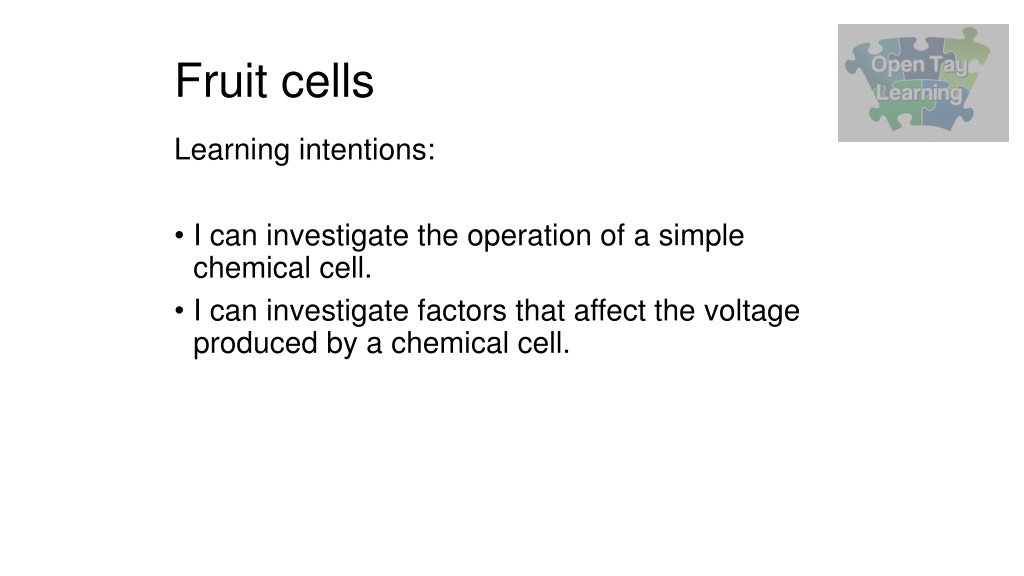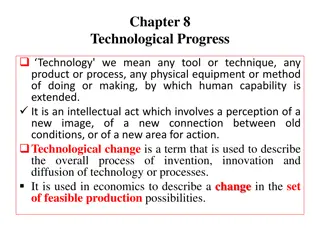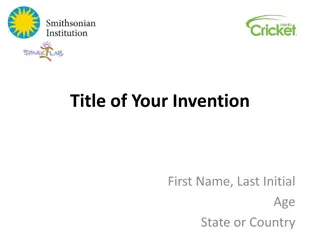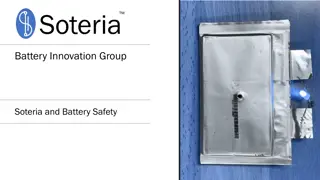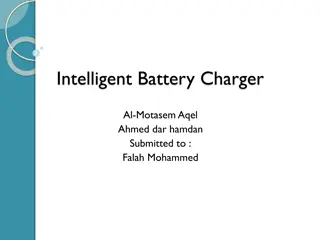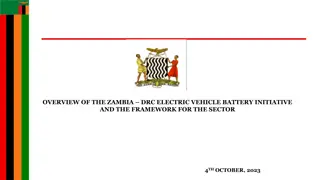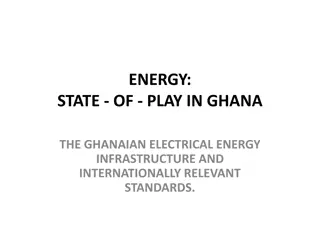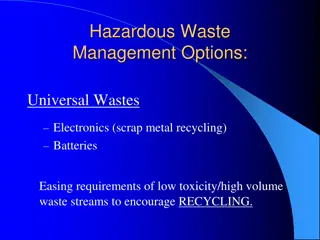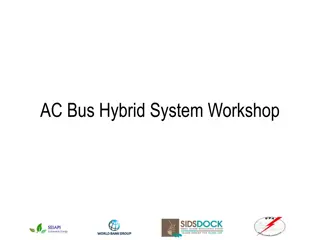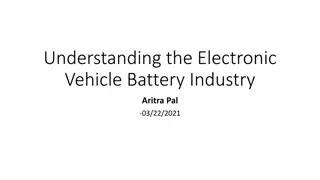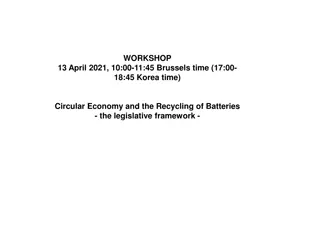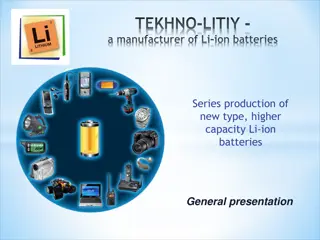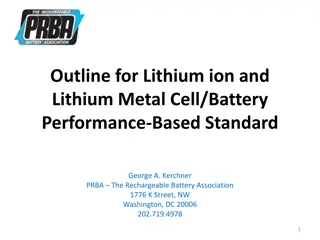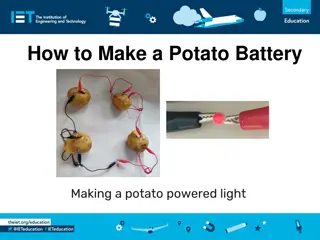The Story of Alessandro Volta and the Invention of the Battery
Discover the fascinating journey of Alessandro Volta and the invention of the battery as he unraveled the mysteries of electricity through experiments with frog legs, leading to the realization of chemical reactions generating electric current. From Luigi Galvani's twitching frog legs to Volta's creation of the first battery, explore the historical significance and scientific breakthroughs that paved the way for modern-day energy storage technologies.
Download Presentation

Please find below an Image/Link to download the presentation.
The content on the website is provided AS IS for your information and personal use only. It may not be sold, licensed, or shared on other websites without obtaining consent from the author. Download presentation by click this link. If you encounter any issues during the download, it is possible that the publisher has removed the file from their server.
E N D
Presentation Transcript
Fruit cells Learning intentions: I can investigate the operation of a simple chemical cell. I can investigate factors that affect the voltage produced by a chemical cell.
What generates electricity in a battery?
When two different metals are placed in a common conducting solution, electricity will be produced. This is the basis of the electro-chemical cell, or wet cell.
Flicking on the Switch In 1786 Luigi Galvani hung the legs of a dead frog on a railing in a thunderstorm to see if lightning would make them twitch .
Flicking on the Switch He believed he had created Animal Electricity and many people began to believe that this was the secret of life itself. By creating a static charge he and other scientists could get the dead frog s legs to twitch
Flicking on the Switch However, one day he made the legs twitch without any charge. It was Alessandro Volta who realized why: the brass hooks on which the legs hung were reacting chemically with an iron stand to create an electric current.
Flicking on the Switch Many believed that such electrical currents would bring the dead back to life.
Flicking on the Switch Alessandro Volta discovered that the electricity came from the chemical reaction between the metal and the metal hook on which the legs hung. Knowing this, Volta made the first battery in 1800
Worlds first... Two metals in a frog s leg made it twitch Italian physicist Alessandro Volta figured out there was an electrical signal, 1827
Worlds largest... In Alaska Is bigger than a football pitch!
Worlds smallest... In human bodies Stimulates nerve and muscle cells
Chemical cells Chemical cells use chemical reactions to transfer energy by electricity. The voltage of a cell depends upon several factors, including what the electrodes are made from, and the substance used as the electrolyte.
A chemical cells converts chemical energy to electrical energy. A chemical cell is a source of electrical energy.
A simple cell can be made by connecting two different metals in contact with an electrolyte. Several cells can be connected in series to make a battery, which has a higher voltage than a single cell.
What affects the voltage of a cell? If we connect different combinations of metals to make a cell, we find that the voltage changes. It is because they have different reactivity.
Fruity Batteries What do you think electro-chemical means? What do we need to make an electro-chemical cell?
Batteries store chemical energy and transform this energy into electricity. Fruit batteries can also be called electro-chemical cells. Citrus fruits have an acidic content, and the more acidic it is, the better it is for conducting electricity.
The copper and zinc act as positive and negative battery terminals. The zinc wants to give away electrons, they are carried by lemon juice (citric acid) to the copper terminal hence producing electricity (voltage).
An electrochemical cell consists of two metals of different reactivity dipped into an electrolyte. A common example is zinc and copper. The electrolyte can be an acid, alkali or a solution of a salt.
Electro-chemical cells Aluminium Copper Electrodes Orange V Voltmeter
Fruity Batteries Today you are going to investigate which fruit produce the best battery, the highest voltage. How do you think you can do this?
Instructions... 1). Make a small cut into the lemon on either side 2). Attach one crocodile clip to the one metal and one to the other metal. 3). Try adding a small lamp or LED to the circuit and see if it lights up. 4). Attach a voltmeter and record the reading in your table
Procedure You will need - 1 lemon, 1 coin, 1 zinc nail. Insert a coin into the side of a lemon. Push on of the nails into the other side of the lemon. Make sure the coin and nail don't touch. This is a single battery cell. The copper coin and zinc nail act as electrodes and the juice of the lemon acts as the electrolyte Now repeat the experiment by using different fruit
Fruity Batteries In your groups, carry out your experiment and record your results in your table. Fruit Metal 1 Metal 2 Voltage (V) orange lemon apple
Electro-chemical cells Aluminium Copper Electrodes Citric acid solution V Voltmeter
Answer these questions Which fruit had the highest Voltage? Which fruit had the lowest Voltage? Rank the fruits in order of how well they would be as a battery What acid does the lemon contain?
Citrus fruits are acidic, which helps their juices to conduct electricity. What other fruits and vegetables might you try that would work as batteries?
If you have a multimeter, you can measure the current produced by the battery. Compare the effectiveness of different types of fruit. See what happens as you change the distance between the nails.
